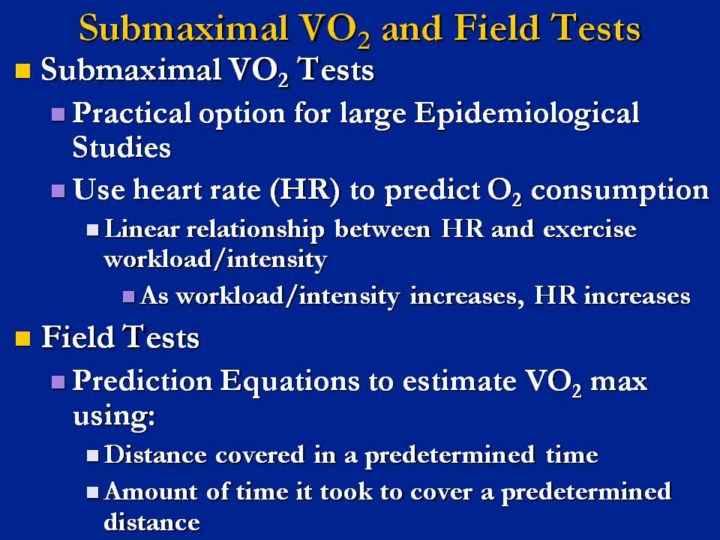| front |1 |2 |3 |4 |5 |6 |7 |8 |9 |10 |11 |12 |13 |14 |15 |16 |17 |18 |19 |20 |21 |22 |23 |24 |25 |26 |27 |28 |29 |30 |31 |32 |33 |34 |35 |review |
 |
In instances where VO2 max testing is not practical, such as with large epidemiological studies, submax VO2 and field tests have been used to estimate VO2 max. Submax VO2 tests use heart rate to predict the oxygen consumption that would have occurred during maximal workloads (VO2 max). Submax VO2 tests are able to predict VO2 max because of the linear relationship that exists between heart rate and exercise workload/intensity (as workland/intensity increases; HR increases) (ACSM, 2000).
Similarly, field tests use either the distance that is covered or the amount of time it took to cover a particular distance to estimate VO2 max using established prediction equations (ACSM, 2000)
Recommended Readings: American College of Sports Medicine (2000). ACSM’s guidelines for exercise testing and prescription (6th ed.). Baltimore, MD: Lippincott Williams & Wilkins.
|